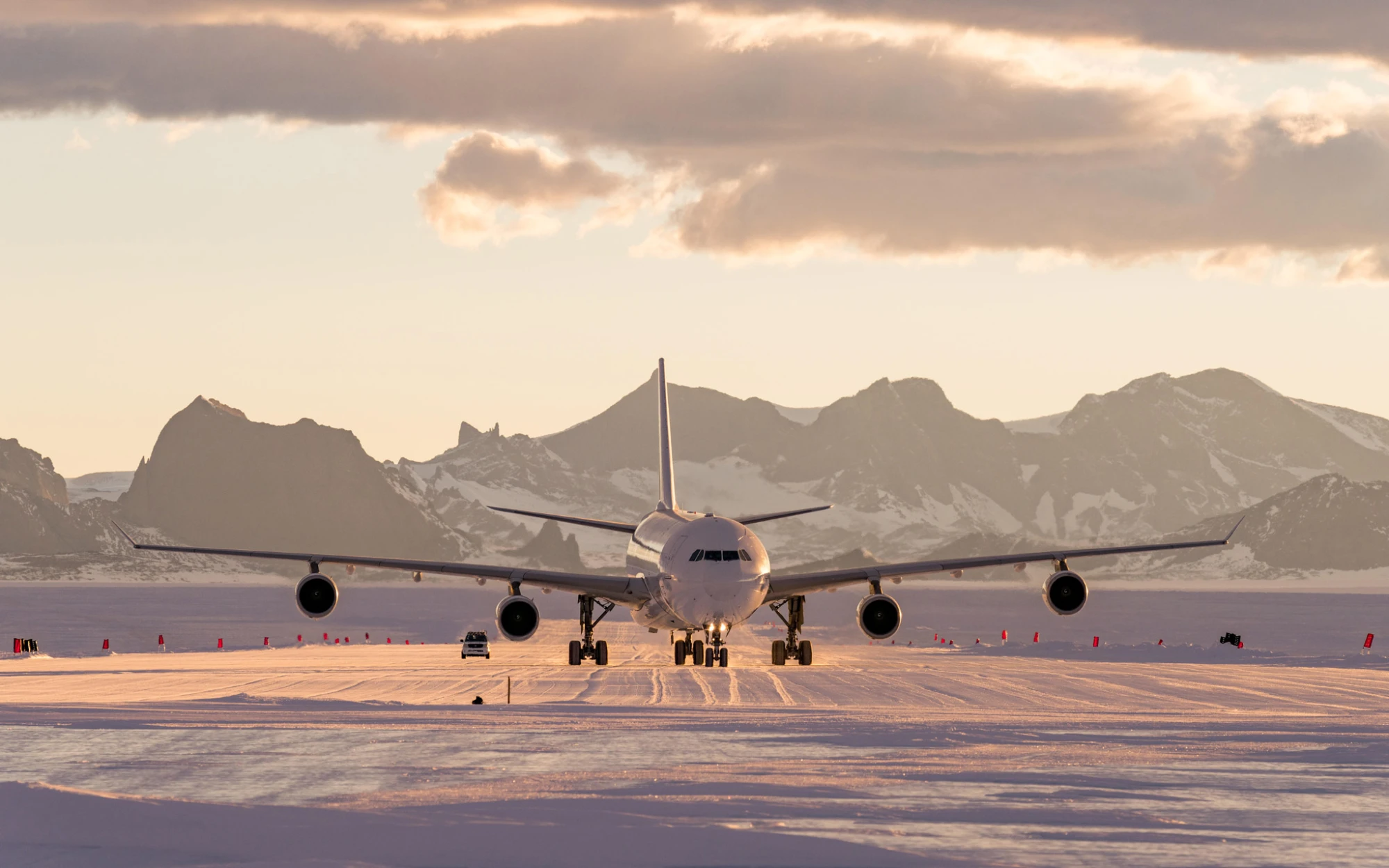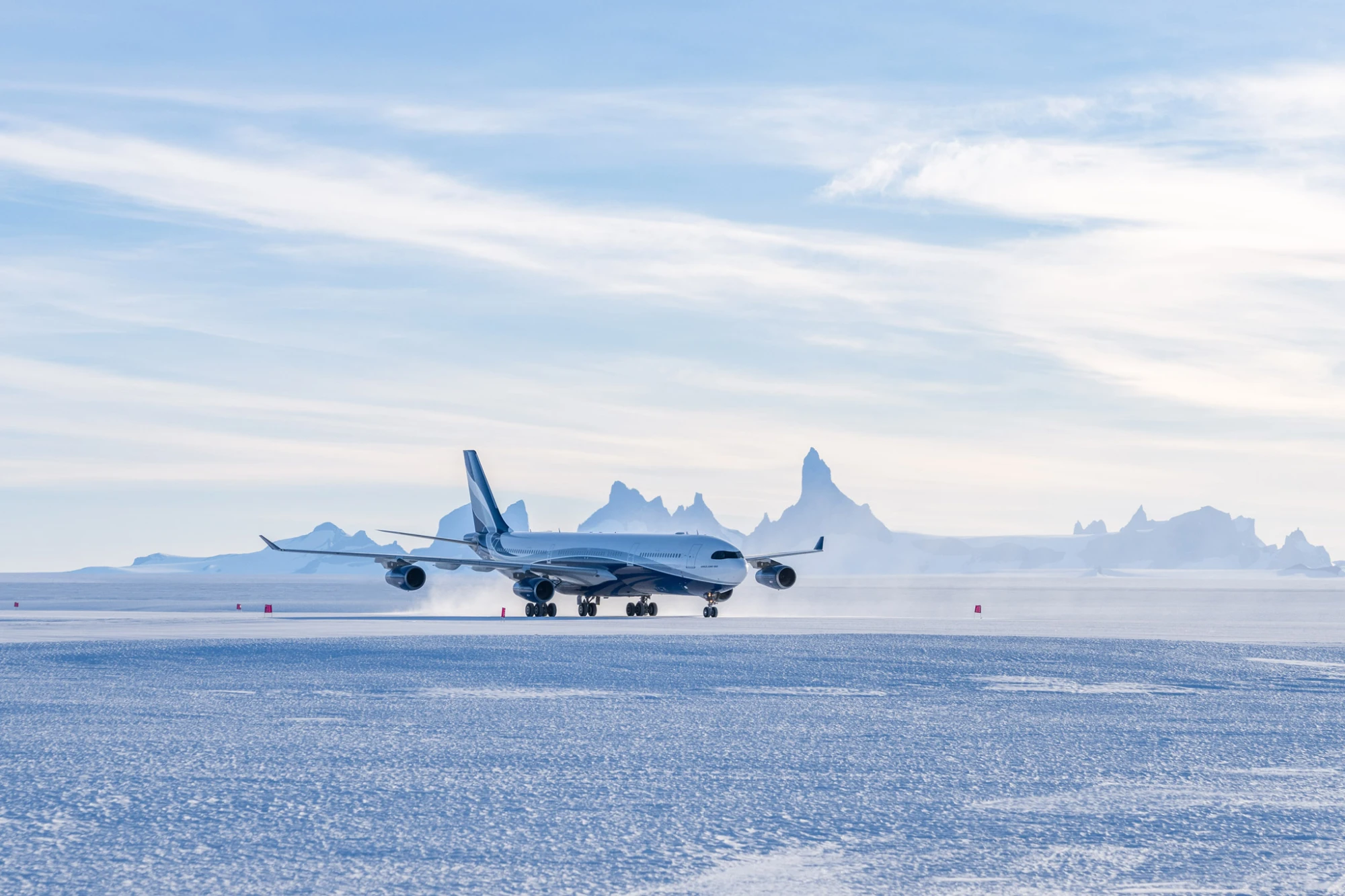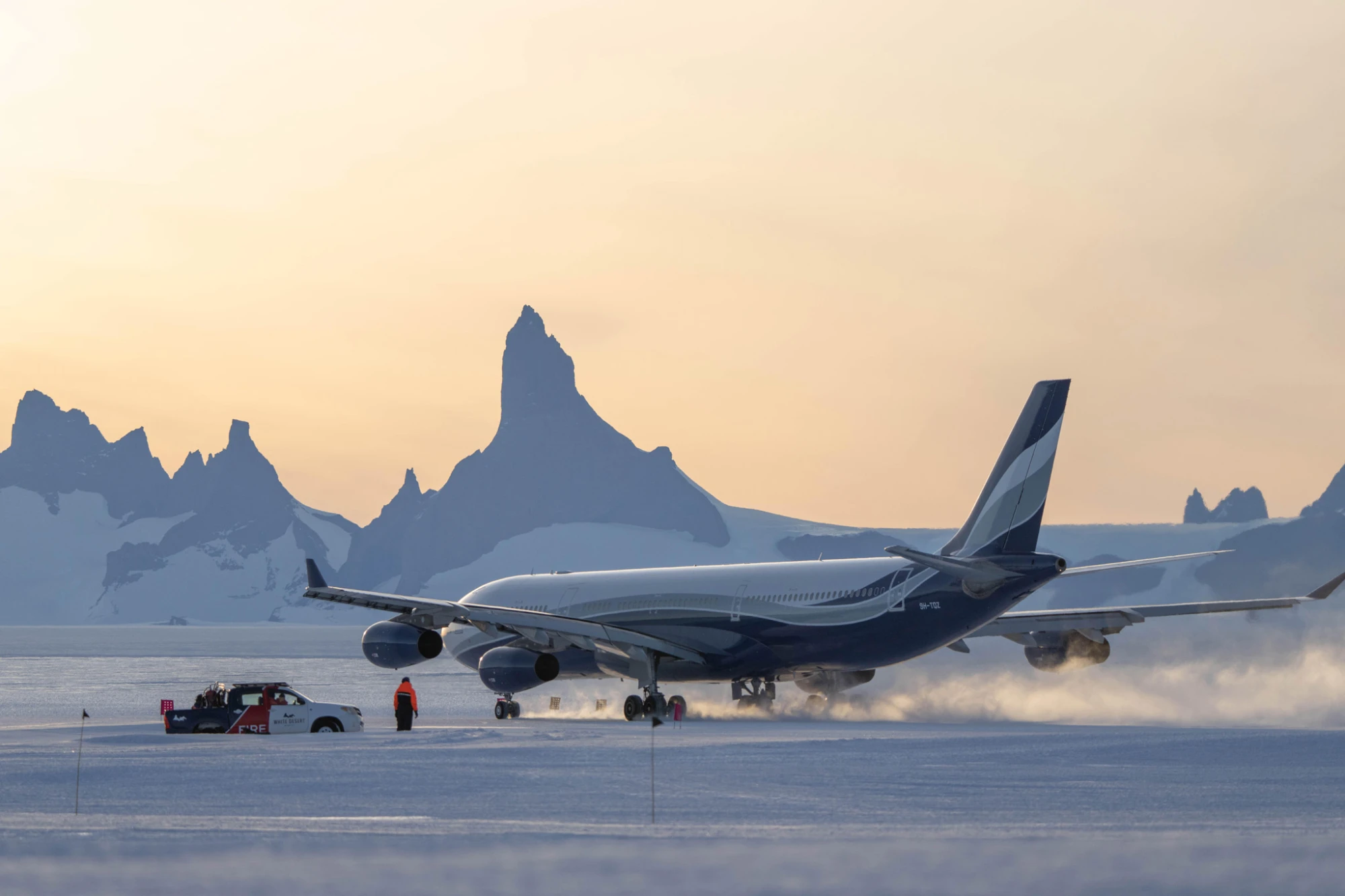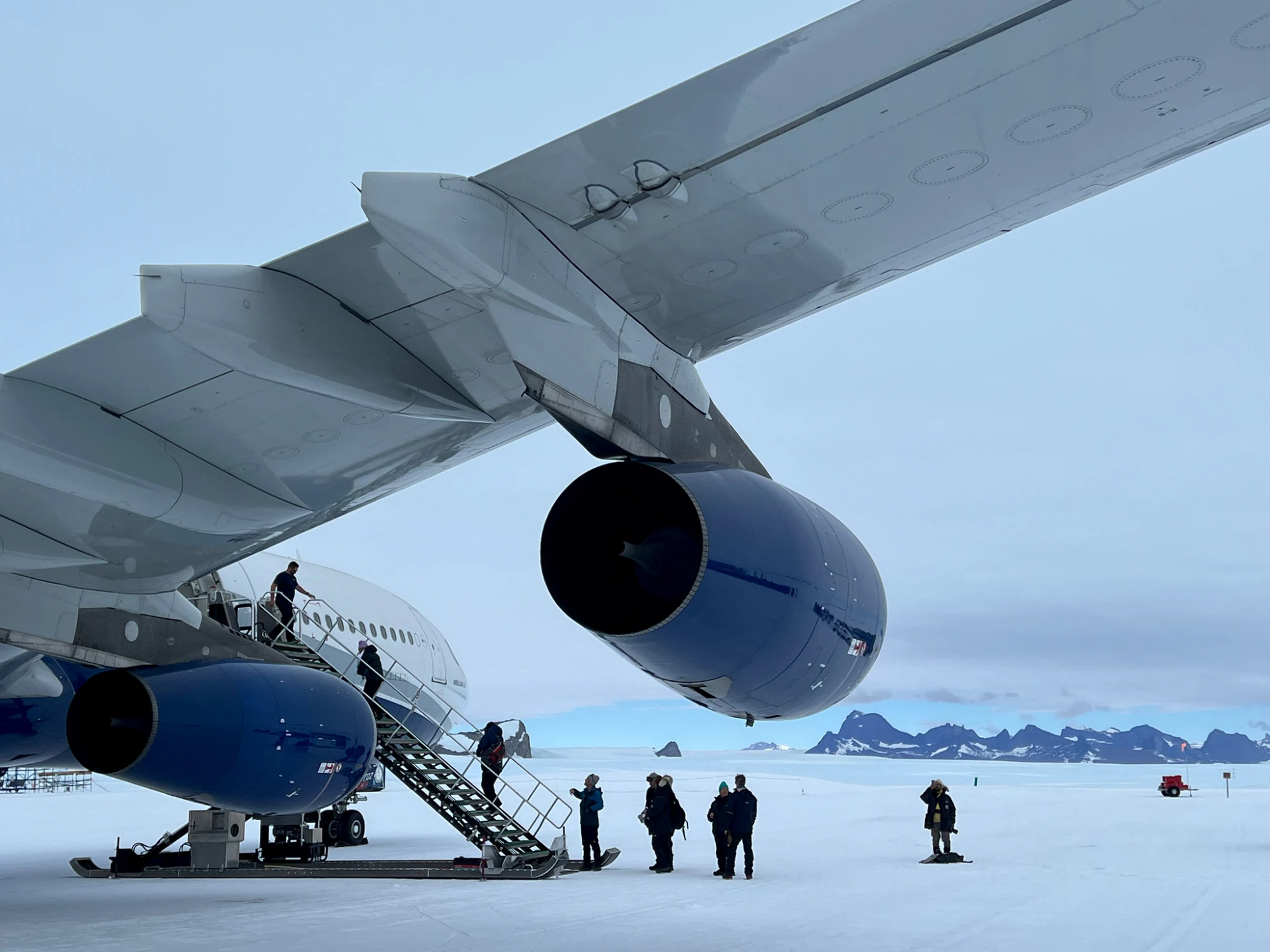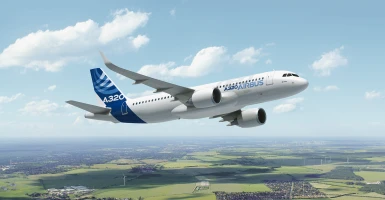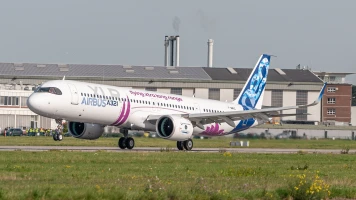My flight has been moved up. Takeoff is now twelve hours before the scheduled departure time—early morning instead of early evening. Such a change would be unthinkable for scheduled flights, but flight 3L 801 from Cape Town to Wolf’s Fang is anything but a normal scheduled flight: it’s the world’s first scheduled service to Antarctica with a large passenger aircraft. The only thing that matters here is the weather. And today, given the satellite images and data from weather stations at the bottom of the world, that flight will be departing earlier. Anyone traveling to the southern polar region needs to be flexible.
As the sun rises behind Table Mountain, we board an Airbus A340-313X, a version with increased takeoff weight, built in 1997. Two Greek pilots and a first officer from Portugal sit in the cockpit. Portugal is also home to the flight operator, the charter company Hi Fly. “Together with tour operator White Desert, we’ve spent the last three years developing all the procedures for this unique route,” pilot Adam Latsos explains to me.



